|

by Jon Mikelonis
Introduction
What does adding a stereo amplifier, an electric fan, a tachometer,
or any one of a thousand possible mobile electronic devices
to your project car have in common? Answer. Almost all of
them will call for connection to a "12 Volt Key-On Source"
during the install. I can
admit that until just a few weeks ago, everytime I read an
instruction sheet that declared "...connect the red wire
to an available 12 Volt Key-On Source", I cringed knowing
that I'd be under the dash contemplating the task. Sure, I
could employ the splice technique once again, but something
has always seemed inherently lame with the procedure and it
usually creates a mess. So, after talking my dilemma over
with one more versed in automotive electronics, I discovered
a clean and safe solution for creating a block of 12 Volt
Key-On sources.
What's Needed?
The slickest part of this homegrown modification is that it
can be accomplished with an old Ford starter solenoid. NOT
YOUR EXISTING STARTER SOLENOID if you already have one transferring
power to your starter. Here's
a list of suggested parts, supplies, and special tools. Not
all are necessary, but let's do it right.
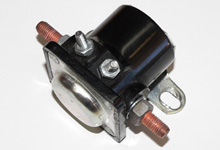 Ford Starter Solenoid (Relay)
Ford Starter Solenoid (Relay)
If you've ever owned an old Ford, you've seen one
of these. If the car you are working on has one, don't
get confused, this modification is meant to work with
an additional solenoid. The solenoid works as a relay
to power a terminal block with 12 Volts supplied directly
from the battery. See sidebar for a specialty alternative
to using a Ford Starter Solenoid. |
|
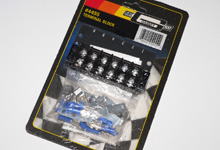 Terminal Block Kit (MRG-4455)
Terminal Block Kit (MRG-4455)
Mr. Gasket offers these simple but valuable terminal
block kits. They come with jumpers, female quick disconnects,
male tabs, and mounts for fuses if you need them. The
block is designed to handle up to 30 amps. The main
supply wire must be fused with a 30 amp fuse maximum.
I picked the kit up at Summit. |
| |
|
|
 Inline Fuse Holder
Inline Fuse Holder
This is the fuse holder I used in the main supply
wire to the terminal block. They are available at Wal-Mart
and most automotive chain stores. I was sure to get
one that uses 12 gauge wire. |
|
 30 Amp Fuse
30 Amp Fuse
These standard fuses are also available at Wal-Mart
and most automotive chain stores. |
| |
|
|
 12 Gauge Wire
12 Gauge Wire
This is used to connect the battery to the Ford
starter solenoid and Ford starter solenoid to terminal
block. |
|
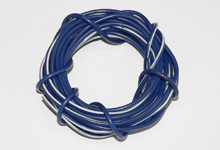 16 Gauge Wire
16 Gauge Wire
This gauge wire is used to connect one existing
12V Key-On source to the Ford starter solenoid. |
| |
|
|
 Ring Terminal Connectors
Ring Terminal Connectors
I needed both large and small ring terminal connectors
to use on the Ford starter solenoid. Pictured is a pack
for 12 gauge wire (yellow) and one for 16 gauge wire
(blue). |
|
 Female Terminal Connectors
Female Terminal Connectors
Used to connect accessories to the terminal block.
The Mr. Gasket kit includes some but I prefer the fully
insulated type shown here. |
| |
|
|
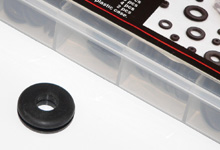 Firewall Grommet
Firewall Grommet
Anytime you pass wire through the firewall, using
a grommet is mandatory. |
|
 Shrink Tubing
Shrink Tubing
Shrink tubing makes terminal connections much cleaner. |
| |
|
|
 Good Ol' Wire Crimps
Good Ol' Wire Crimps
A quality pair of wire crimps beats the ones you
always see at the chain store. They made this task much
easier. |
|
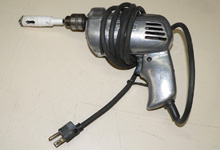 Drill and Sheetmetal Hole
Saw
Drill and Sheetmetal Hole
Saw
To get through the firewall cleanly, I used a hole
saw and power drill. |
|

